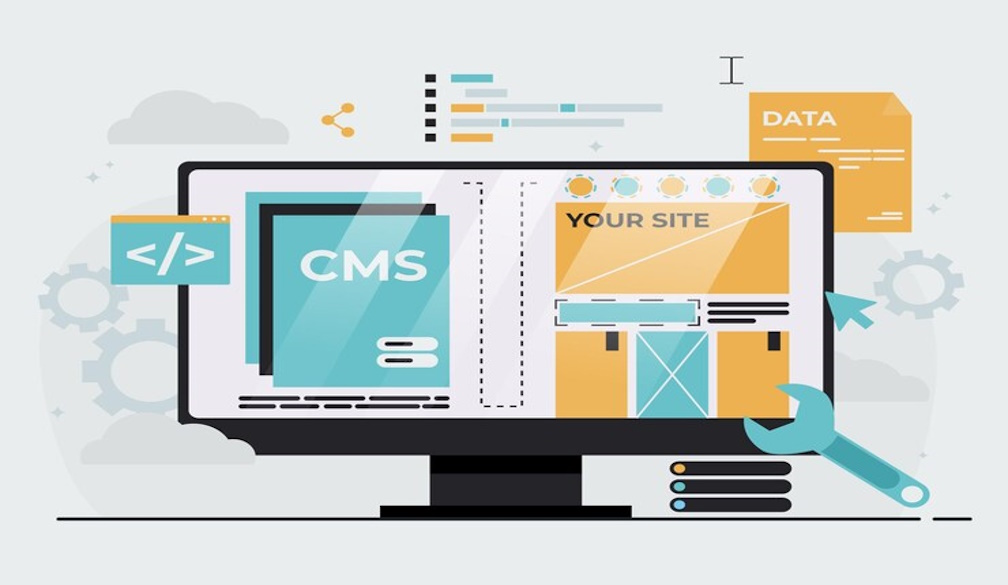How to Load Balance Content Requests in Headless CMS Architectures

Load balancing is crucial for content request management and delivery when operating within a headless CMS. If you fail to balance your CMS environment, you could face performance problems, application downtimes, and inconsistent experiences within your application and website. This article will cover tips and best practices for load balancing content requests within a headless CMS.
Understanding Load Balancing in Headless CMS
In a headless CMS, load balancing refers to the allocation of incoming API requests and content requests across multiple nodes to prevent performance failures and crashes (too many requests on one node). Future-proof your content with headless CMS by leveraging effective load balancing strategies. In this instance, load balancing is crucial to maintain consistent performance and a quality user experience even with high traffic.
Benefits of Implementing Load Balancing
Load balancing offers several benefits for your headless CMS. For example, it enhances scalability and availability since it regulates resources and distributes loads across various systems. Another benefit is reduced latency; load balancing ensures that no single server is overloaded, which would otherwise hinder performance and timing of responses. In addition, a successful load balancing initiative brings reliability and redundancy; load balancing minimizes downtime so that users can consistently access content no matter how busy the traffic is to some pages or how many servers are down, potentially.
Choosing the Right Load Balancing Method
Selecting an appropriate load balancing method is critical. The most popular methods include round-robin, least connections, and IP hash. Round-robin balancing sends new requests, in order, to servers that are currently available. Least connection balancing transfers new traffic to the server with the least amount of connections; this is best for situations where certain connections are open for shorter durations than others. IP hash balancing ensures users are sent to the same server based upon their IP address. This is useful for session stability. Selecting the proper method is done with an understanding of traffic flow and server activity.
Utilizing Hardware vs. Software Load Balancers
An organization will have to decide between hardware or software load balancers. A hardware load balancer is a physical, dedicated device that is optimized for performance and reliability and can handle extremely high levels of traffic. However, it is more expensive and less adaptive. A software load balancer is less expensive, more adaptive, and easier to implement as it exists more often in cloud or virtualized settings. Ultimately, the decision depends on one's infrastructure budget, traffic needs, ability to scale, and preferences for control over the load balancing process.
Leveraging Cloud-based Load Balancing Solutions
Cloud-Based Load Balancing: AWS, Azure, and Google Cloud have access to cloud-based load balancing, which is efficient, scalable, and flexible. Managed load balancing options automatically distribute network traffic to multiple instances or availability zones, promoting resiliency, diminished latency, and a component one does not have to manage when dealing with an increasingly complicated infrastructure. In addition, for microservice architecture that requires rapid scalability, cloud-based load balancing works best as it can adjust for additional users without complicated configurations, minimizing overhead and operational complexities.
Integrating a Content Delivery Network (CDN)
For even more performance and scalability, load balancing can be combined with a CDN. A CDN, or content delivery network, employs edge locations worldwide to cache your content; thus, requests served nearer to the end user reduce stress on the server. For instance, if a CDN serves requests for static content, the headless CMS backend can redirect its time and energy to more important dynamic content requests. Therefore, with proper load balancing, the combination can decrease latency, improve performance worldwide, and provide an even more effortless content delivery experience during high traffic.
Implementing Session Persistence for Consistency
Session persistence sticky sessions means that once a user is connected to a server, all requests from that user will be sent to that server for the duration of the session. This is important for ensuring a uniform user experience in headless CMS architectures, where user state or session data is critical to continued functionality. Therefore, by keeping requests on the same server for session persistence, developers can be sure that session data does not become overwritten by another server response. However, this must be balanced to avoid load imbalances, as traffic may not be spread out evenly. Thus, session persistence requires strategic implementation and ongoing assessment.
Monitoring and Adjusting Load Balancing Strategies
Load balancing should be monitored and adjusted frequently. Monitoring determines not just the state of each server (health, efficiency, lag) and requests entering but also, over time, statistics that effectively indicate a bottleneck or subpar load balancing. Adjusting and readjusting load balancing frequently can guarantee it works effectively so that your headless CMS framework is always up to code relevant to all possible situations.
Security Considerations in Load Balancing
Security is an integral part of load balancing and a continual concern, particularly in a headless CMS configuration where the team is always sending sensitive amounts of content and requesting it back. The load balancer is often the first port of entry for all inbound traffic. Therefore, it is susceptible to various attacks, including unauthorized access, Denial of Service (DoS) and Distributed Denial of Service (DDoS), brute force, data breaches, and eavesdropping. When load balancing does not offer comprehensive security, your headless CMS application is left vulnerable to easily exploitable entry points, leading to the release of sensitive information and compromising the entire application's operation and integrity.
Implementing advanced security protocols and ensuring SSL/TLS encryption specifically for content delivery aids in the protection of important information. SSL/TLS encryption both protects sensitive data in transit as well as serves as an authentication mechanism for your servers, ensuring these are your servers and not other access points created by would-be attackers to intercept, corrupt, or otherwise act upon data while in-flight. Requiring SSL for all load-balanced connections minimizes the chance for data leakage, accidental sharing, and more privacy concerns, which simultaneously improves user trust.
Yet beyond encryption, it's critical to add intelligent firewall rules and filter traffic at the load balancer, too. For example, firewall rules should be used to monitor and distinguish nefarious traffic or abnormal activity and take quick action to remediate such issues, blocking what could impact the backend CMS from even getting off the ground. Similarly, traffic filtering is helpful for precisely determining the traffic an organization wants to accept; for example, filtering known bad actors enables the organization to block those IPs, reducing the subverted surface area and taking proactive actions to prevent any infrastructure from falling victim to easily avoidable attacks.
Furthermore, with rate-limiting or throttling at the load balancing layer, organizations can curtail the number of requests sent by one IP or one source. By limiting the potential for overwhelming repeated actions, it helps to reduce brute force or automated scrapes of a site, as rate-limiting is a common sign of malicious activity. Therefore, if the load balancer can intelligently recognize this activity and automatically block it, it helps to secure the platform and let it withstand egregious attacks.
Furthermore, securing the load balancing strategy with security determinants provides protection from DDoS invasions and long-term viability. For instance, enterprise-level load balancing solutions incorporate real-time threat assessment, reactive security and remediation to educated threats, and proactive detection to avoid impending disasters. Therefore, these security-specific options sense, redirect, and purge such threats before they are able to inflict any significant damage to the functionality and accessibility of your headless CMS solution.
Ultimately, securing the load balancing strategy with security determinants provides not only protection from intrusions but long-term viability. DDoS attempts to take headless CMS solutions out of operation permanently can be avoided, and by consistently assessing load balancing strategies, companies can ensure their headless CMS operates in a secure fashion, compliance-required accessibility, for a safe and secure quality experience for all users, no matter how sophisticated the endeavors of cyberattack infiltrators.
Load Balancing for Future Growth and Scalability
Load balancing is up and running successfully today, so you'll need it tomorrow. Constructing a headless CMS infrastructure that has scalability for load balancing in mind facilitates adjustments down the line when such adjustments are needed. This, too, means that companies should regularly evaluate their load balancing configurations to ensure they're poised and positioned to support potential growth or changes down the line. Considering scalability in the planning process prevents problems of decreased performance down the line when the content hub starts growing. Instead, it positions the digital ecosystem and customer experience for success in the long run.
Ensuring Optimal Performance Through Effective Load Balancing
Load balancing facilitates performance in high-demand situations because, with many users consuming content during this digital age, sites are expected to be running at maximum capacity all the time. If sites go down, which many do not, latency logs indicate lost brand impressions and drive consumers to other sites. Thus, without high-demand performance, for example, load balancing can inundate a headless CMS when everyone is accessing the same information at one time. Instead, the system fails, response time lags, consumers are disappointed and forced to leave the site due to crashing or frustration, which ultimately reduces brand loyalty.
The way to avoid these problems is for companies to implement appropriate load balancing strategies and systems that match their capabilities and needs. For instance, round-robin, least connections, or IP hash balancing offer varying advantages, in addition to requiring certain use cases, but all promote equal traffic distribution, less latency, and a superior overall experience and engagement. When companies determine the practicality of load balancing on their behalf and appropriately align it with techniques and systems, they vastly improve their platform's effectiveness, dependability, and efficiency.
In addition, load balancing can be enhanced by cloud services and content delivery networks (CDN). The load balancing options afforded by cloud services via the major vendors' applications offer unmatched levels of flexibility. Auto-scaling and low deployment needs make it easy to implement for organizations with inconstant traffic patterns. Furthermore, when used in conjunction with a CDN, that is, a service that caches static assets closer to the end user for better content delivery organizations not only receive faster content delivery with less pressure on their own servers but also a seamless experience worldwide.
Moreover, ongoing and proactive monitoring is another method for effective load balancing. Through the use of strong monitoring solutions and real-time analytics, organizations can see where traffic is focused, what is being used, and performance metrics to determine quickly if a load balancing solution is either failing or if uneven load balancing has already occurred. By knowing how to respond, organizations can effectively reconfigure their load balancing strategies when needed to ensure resource allocation happens successfully, avoids as much downtime as possible, and encourages operational efficiency.
Furthermore, the capability to customize load balancing solutions over time supports integration with necessary security precautions. Load balancers will stand on the front lines for bad traffic or even DDoS attacks and everything from SSL/TLS requirements to firewalls, rate limiting, and validated authentication on every front should be employed to bolster security where headless CMS platforms are concerned. Well-secured load balancers allow companies to keep proper security in content delivery, integrity, privacy, and platform performance.
Ultimately, being able to customize and fine-tune load balancing solutions over time puts companies in the right position for controlled traffic management. Customization ensures company customers get the reliability they need while easy access improves user experience in the short and long term while reducing business risk and improving infrastructural efficiency for more reliable, scalable performance of headless CMS platforms moving forward.





